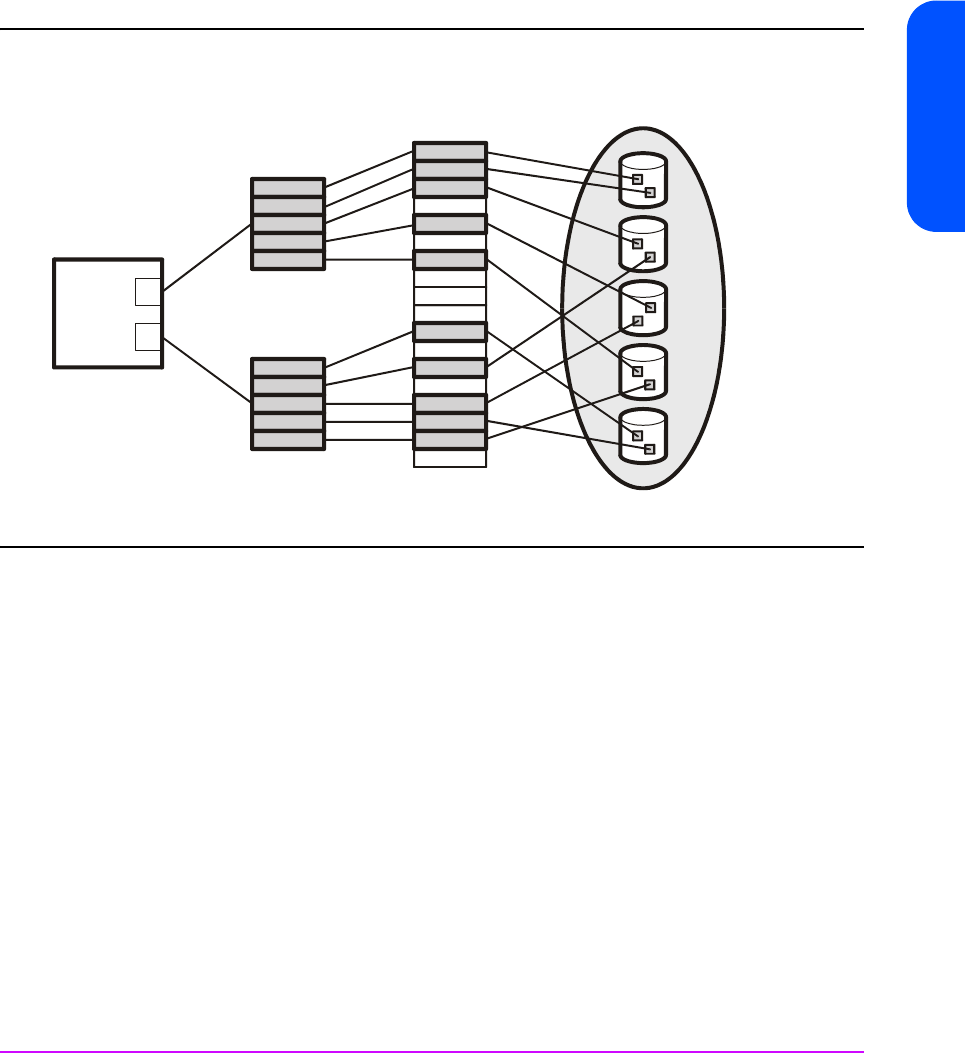HP StorageWorks Virtual Array 7000 Family User and Service Guide (January 2005)
Table Of Contents
- Warranty Information
- Product Overview
- System Configurations
- Lowest Entry Point, Non-HA Minimum Configuration (VA 7100 only)
- Lowest Entry Point, Non-HA Minimum Configuration (VA 7410)
- Entry Level Non-Cluster With Path Redundancy (All VA arrays)
- Entry Level Cluster with Path Redundancy High Availability (VA 7410)
- Midrange Non-Cluster (All VA arrays)
- Midrange Non-Cluster (VA 7410)
- Midrange Non-Cluster with Full Storage Path Redundancy (All VA Arrays)
- Typical Non-Clustered with Path Redundancy (VA 7410)
- Typical Clustered Configuration (All VA models)
- Typical Clustered Configuration (VA 7410)
- HP-UX MC Service Guard or Windows 2000 Cluster (All VA arrays)
- Highly Redundant Cluster (VA 7410)
- Typical Highly Redundant Cluster (All VA models)
- Typical Highly Redundant Cluster (VA 7410)
- Troubleshooting
- Servicing & Upgrading
- Specifications & Regulatory Statements

Product Overview 39
Product Overview
Figure 12 Virtual Data Storage
Redundancy Groups
Array physical capacity is divided into Redundancy Groups. A Redundancy
Group (RG) can be thought of as an independent array. Each RG has its own
set of disks, active hot spare, and controller. LUNs are created from capacity
within a single RG. LUNs can be accessed simultaneously through either
controller.
Multiple redundancy groups provide the following benefits:
■ Fault isolation. Because each redundancy group has its own resources, a
disk failure in one RG will not impact the other RG. This effectively
increases the data availability of the array.
■ Performance management. Applications can be assigned to different RGs,
thus isolating their performance impact on each other.
■ Greater configurability. Each RG can be constructed from different classes
of disks. As an example, one RG could be constructed from a few, small,
Host
LUN 1
LUN 2
Cache
Maps
Storage
Pool










